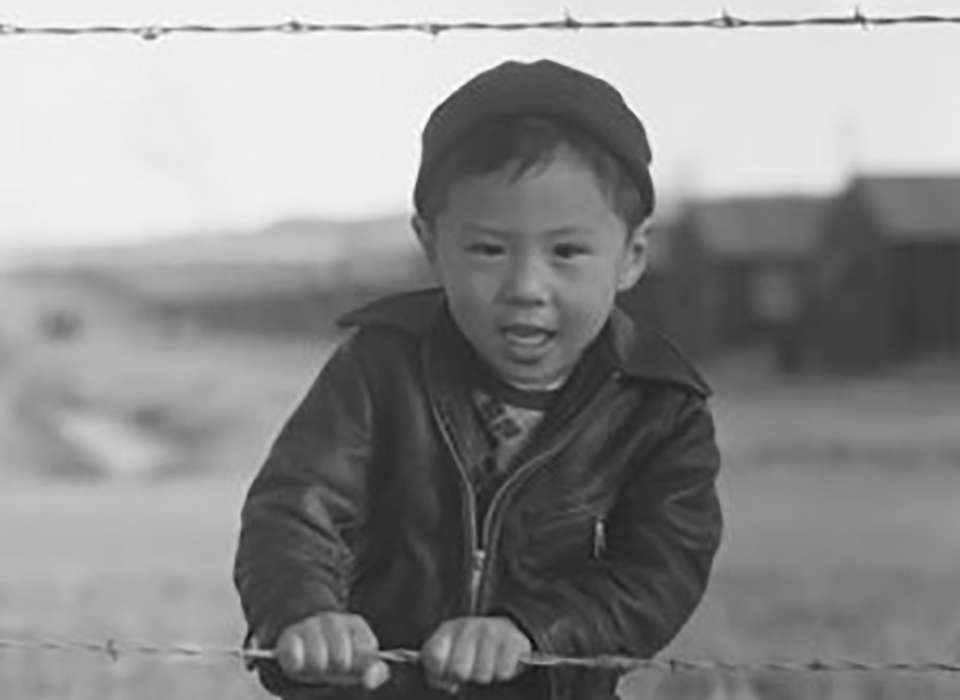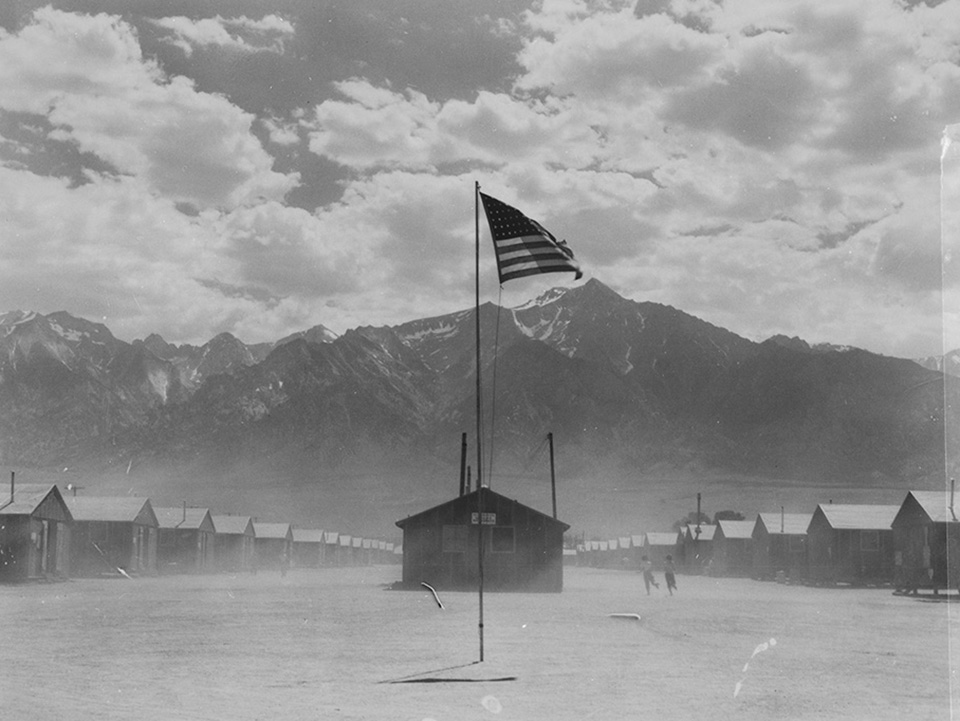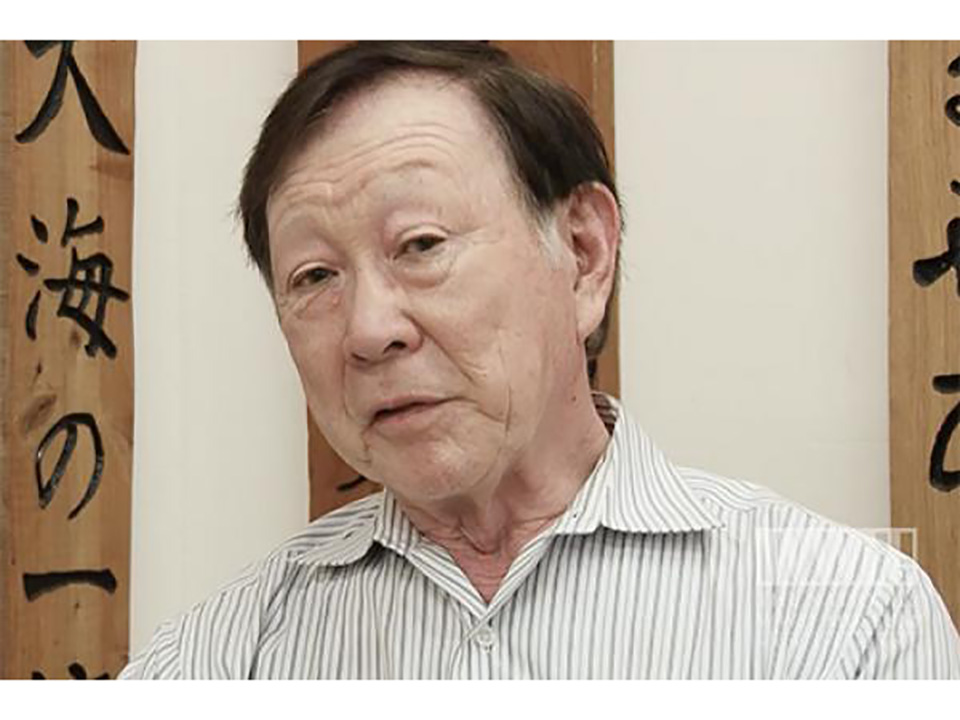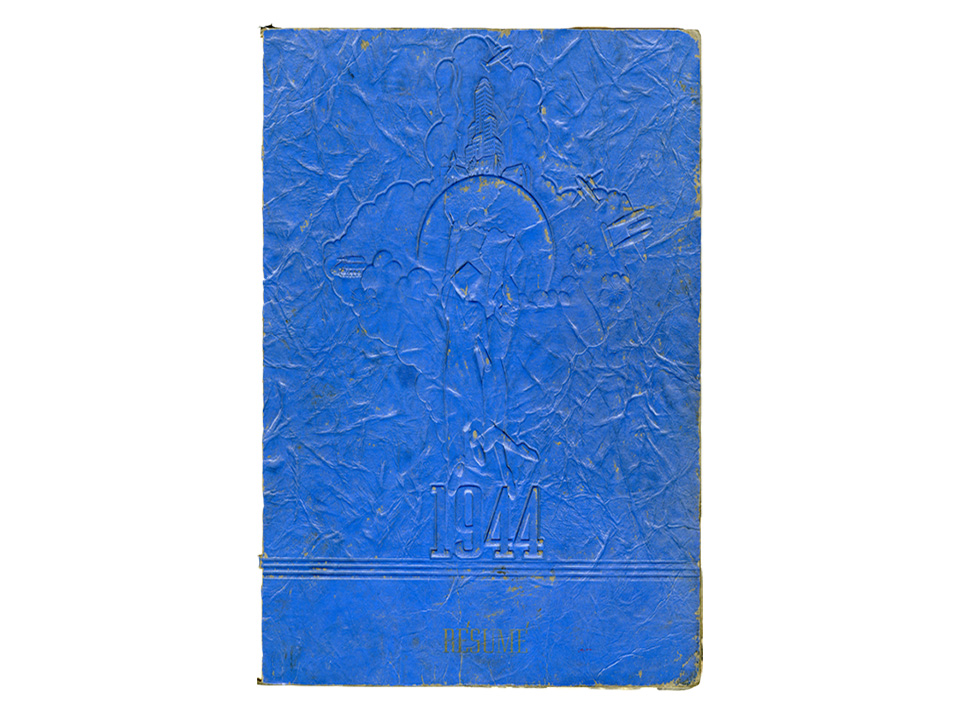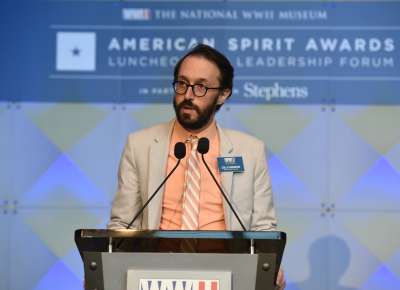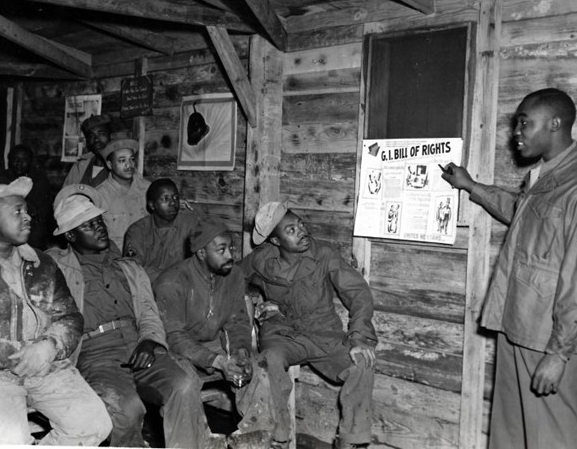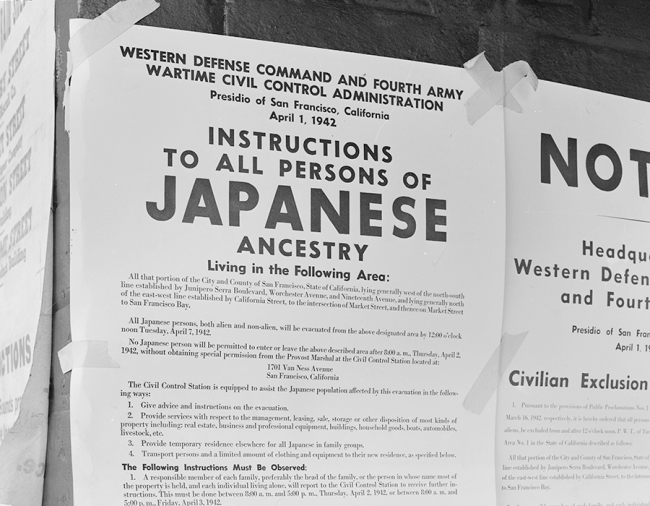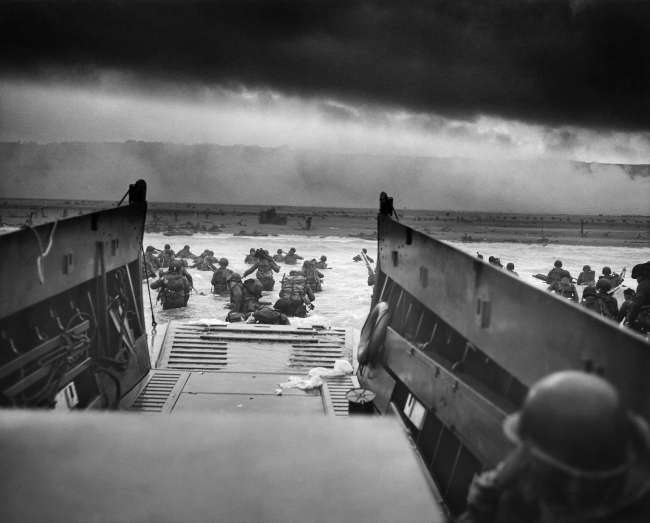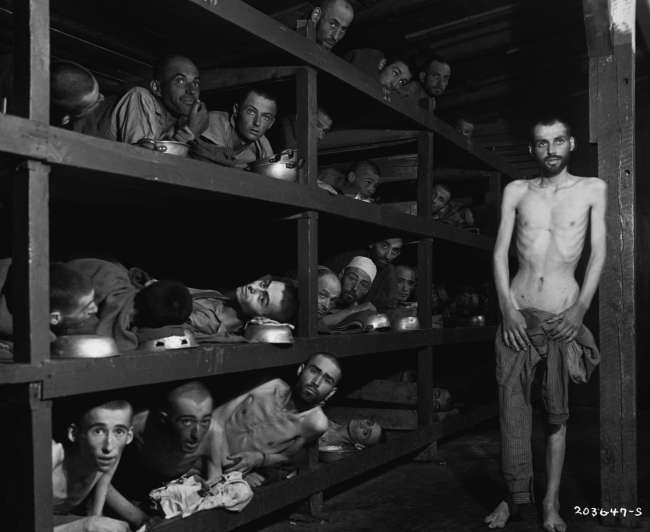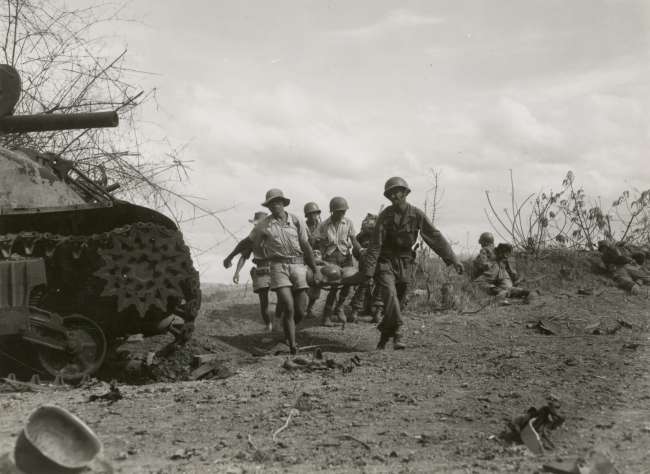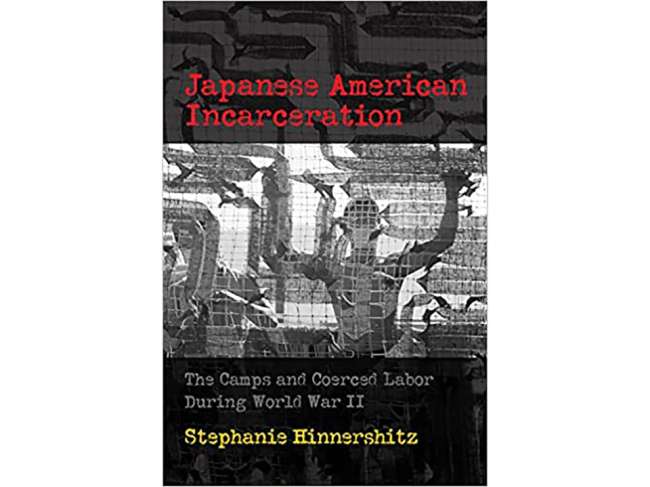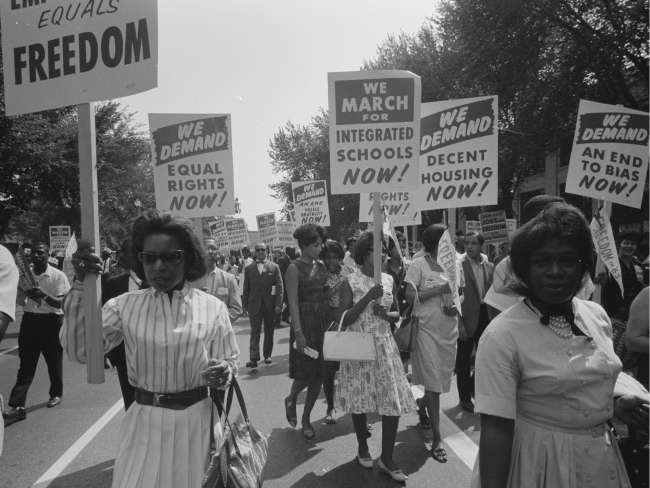Top image: Bill Manbo at Heart Mountain Relocation Center, Wyoming, 1943. Courtesy of Takao Bill Manbo and Eric L. Muller.
In the weeks and months following the December 7, 1941 attack on Pearl Harbor by the forces of the Empire of Japan, fear and suspicion concerning when and where the next attack on America would come spread uncontrolled and uncontained throughout the United States. For many Americans, especially those living on the US West Coast, a third question was asked after ‘when’ and ‘where’: ‘who' would attack us next, as many residents of Washington, Oregon, and California began to view members of their own communities with panic and mistrust. At the beginning of World War II, of the 120,000 total persons of Japanese and Japanese American ancestry living in the United States, 112,000 of them resided on the US West Coast.
From politicians and private citizens alike, racial anxiety multiplied with questions ranging from dual loyalty—whether Japanese Americans support their adopted homeland or their cultural home—to outright accusations of actives networks of fifth-columnists, spies, and saboteurs that could be lurking and working against the United States unforeseen.
As Japan’s succession of military victories in Guam, Malaya, and the Philippines continued throughout the beginning of 1942, America’s fixations on and delusions about its Japanese American neighbors, business partners, and schoolmates crescendoed, reaching the highest office in the land. Bowing to pressure and justification based entirely along racial lines, President Franklin Roosevelt, on February 19, 1942, issued Executive Order 9066, which directed the War Department to transform vast swathes of the US West Coast into military areas from which anyone could be excluded for essentially any reason. By May of 1942, Washington, Oregon, and California’s populations of Japanese and Japanese American citizens and residents—the true target of 9066—would be gone: forced to leave their homes and most of their possessions behind to be transported and incarcerated at one of 10 incarceration centers deep within the American interior, denied any appeal and all due process of law. However, despite these stoking of fear and racial prejudice, none of these individuals of Japanese or Japanese American ancestry were ever convicted of any crime. Indeed, many of them would go on to serve their country even after their true allegiance had been considered so suspect that they had been placed behind barbed wire.
Beginning in 1978, state governments and members of the Japanese American community, especially former and current residents of Washington, Oregon, and California, have recognized February 19—the day Executive Order 9066 was issued—as a Day of Remembrance. On and around February 19, members of the Japanese American community come together to observe, remember, and reflect on the great wrong that was done to them and their relatives and the resilience and determination they displayed in the years of and decades following World War II.
On this Day of Remembrance, The National WWII Museum wishes to highlight Museum educational resources for middle and high school teachers and students that can be used on February 19 and throughout the year to learn more about the events and aftermath of Japanese American incarceration. These materials, many of them drawn from the Museum’s “From The Collection To The Classroom” curriculum series and Distance Learning Video Archive, are all available free to download or to view with your students.
To begin the discussion or to introduce the topic, have students read the overview essay Japanese Incarceration.. This essay, from the Museum’s Home Front curriculum volume, summarizes the mood of fear and atmosphere of racist panic that swept across the United States and US West Coast following the attack on Pearl Harbor. This essay can be complemented by The Home Front Glossary to help better explain the definition of some key terms such as ‘Executive Order,’ ‘Incarceration,’ and ‘Due Process.’ For this topic, have students concentrate on how such a massive and drastic violation of civil rights could occur and how Japanese American incarceration unfolded so quickly.
For an exploration of what life was like for Japanese Americans behind the barbed wire of the incarceration centers, students can view The Home Front multimedia video Life In The Camps which intersperses primary source footage and interview segments from Japanese Americans taken from their homes and incarcerated during World War II. Get to know one of the over 100,000 Japanese Americans individuals incarcerated during World War II by introducing your students to the oral history testimony of Walter Imahara, a native of Florin, California, who, along with his family, was forced to leave his home and be transported to the Jerome Incarceration Center in southeastern Arkansas. To deepen understanding of the impact of incarceration on young people like Walter Imahara, students can browse the 1944 Rohwer Center Yearbook and read an article about this high school and the lives of its Japanese American student body held entirely behind barbed wire.
Students can attempt to place themselves in the shoes of young Japanese Americans faced with the complex question of whether or not to serve the country that has incarcerated them and their families. For this question, have students view and vote using The Home Front What Would You Do? Scenario: Japanese Internment multimedia video which asks if they would fight for the United States during World War II if their own lives had been turned upside down as had the lives of hundreds of thousands of Japanese Americans.
Finally, to learn more about the Japanese American military units and individuals who did fight for the United States and distinguished themselves in service during World War II, students can read about the heroics of future Senator Daniel Inouye as well as members of the 100th Infantry Battalion and 442nd Regimental Combat Team.
More overview essays, teaching aids, lesson plans, oral histories, and summary videos to help keep the story of World War II alive for current and future students can be found at ww2classroom.org. Additionally, through the Museum’s Media & Education Center, teachers can further explore Japanese American experiences during World War II with their students by registering for the ‘I AM an American!’ Japanese American Internment in WWII Virtual Field Trip. The National WWII Museum solemnly joins with the Japanese American community in this year’s Day of Remembrance and vows to remember now and every day.
Join The National WWII Museum at 11 a.m. CST on February 19, 2021 for "Setsuko's Secret: Heart Mountain and the Legacy of the Japanese American Incarceration," a conversation with Shirley Ann Higuchi, JD, Chair of the Heart Mountain Wyoming Foundation, and Rob Citino, PhD.
To view these multimedia videos, please login or register an account on ww2classroom.org to receive access to essays and lesson plans along with photographs, historic documents, audio recordings, maps, videos, oral histories, and other valuable teaching aids from The National WWII Museum.

Holocaust Education Resources
The Museum highlights educational resources for teachers and students that can be used to explore the tragedy of the Holocaust.
Collin Makamson
Collin Makamson is the former Assistant Director of Education for Curriculum at The National WWII Museum.
Cite this article:
MLA Citation:
APA Citation:
Chicago Style Citation:
